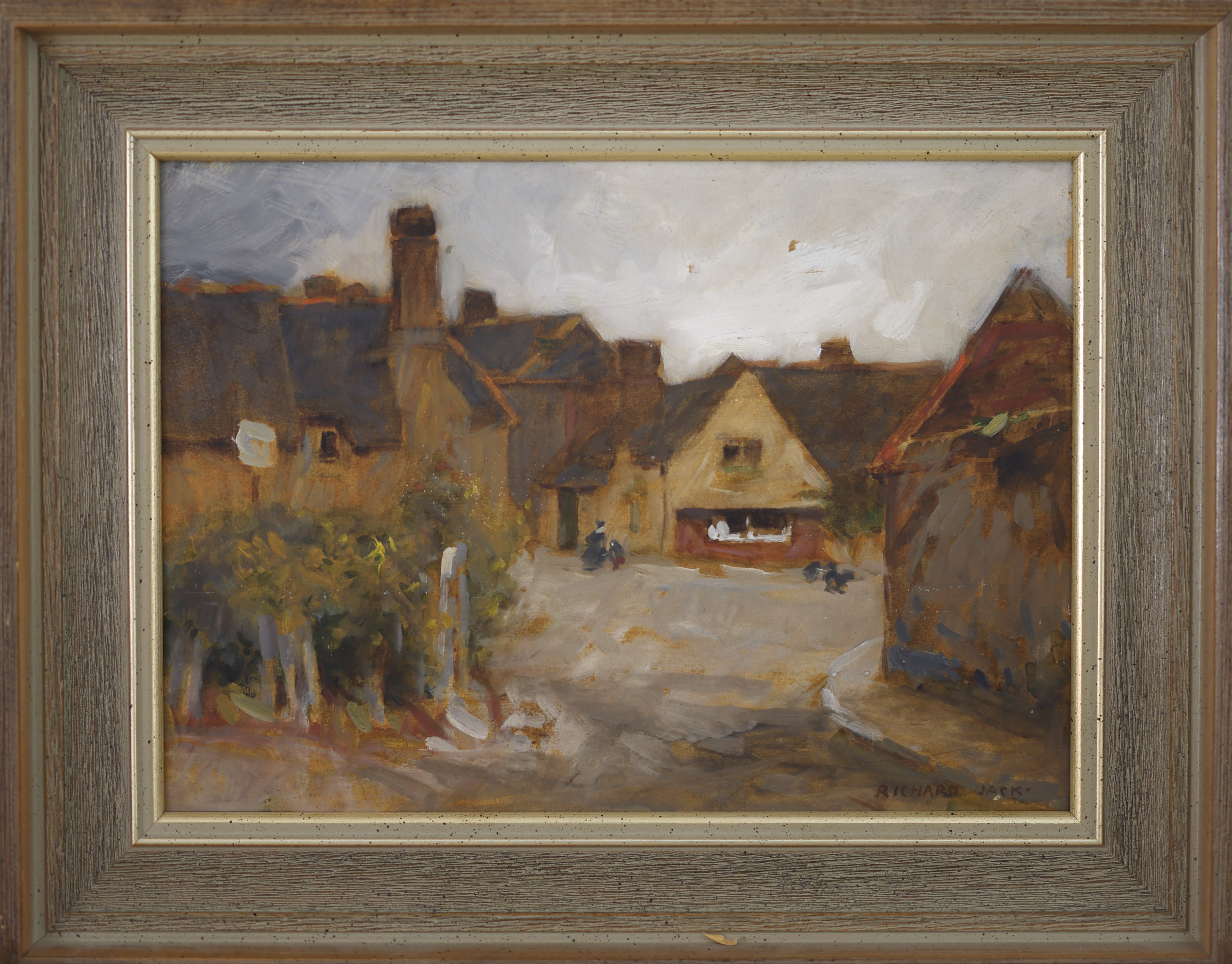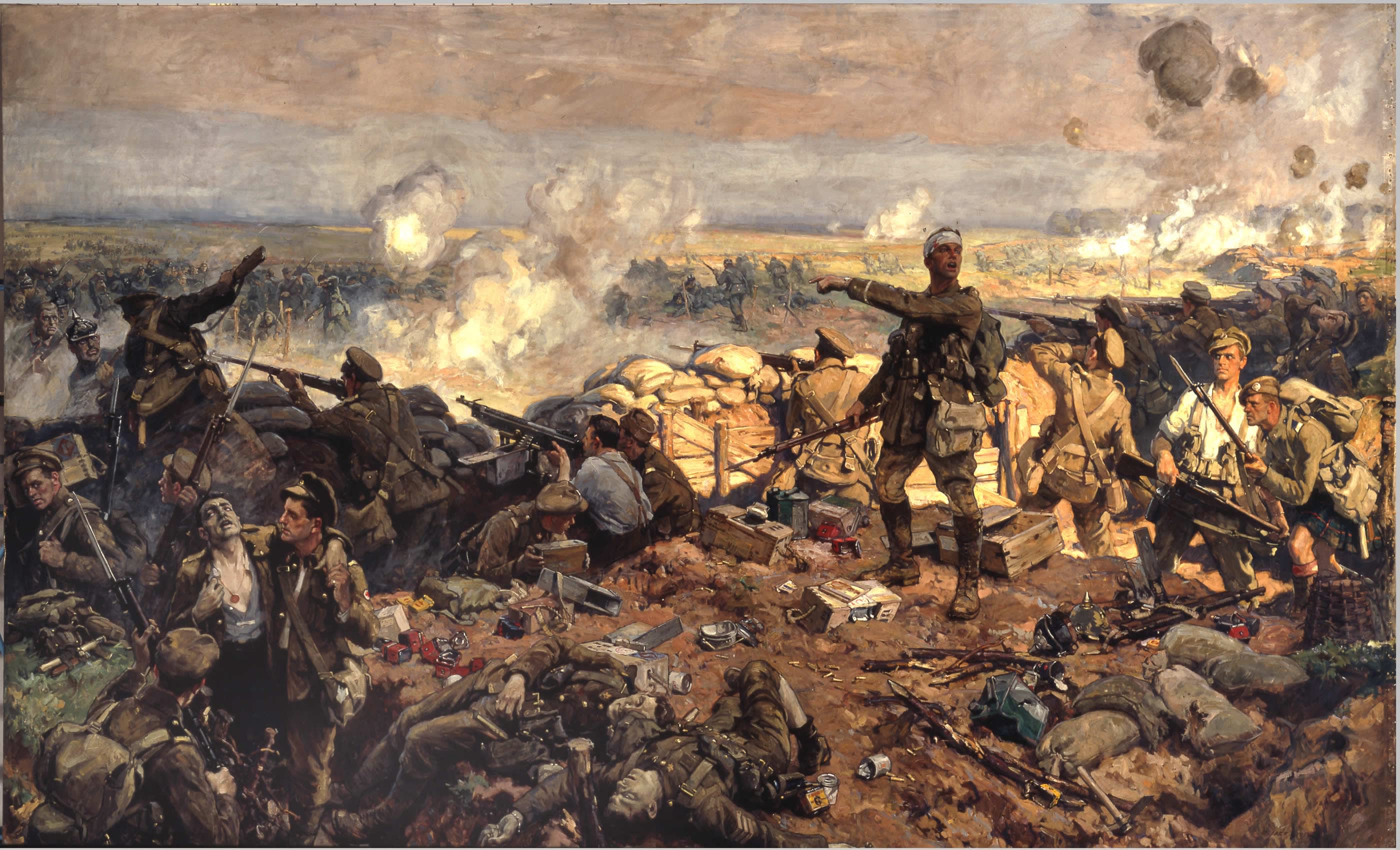Richard Jack (February 15, 1866 – June 30, 1952), an eminent artist and Canada's first official war artist, was born on February 15, 1866, in Sunderland, Tyne and Wear, United Kingdom. His artistic education began at the York School of Art, leading to a national scholarship at the Royal College of Art in 1886. There, Jack excelled, winning a gold medal and later, in 1888, a traveling scholarship to the prestigious Académie Julian in Paris.

Upon his return to London in the early 1890s, Jack's career diversified as he worked on the staff of The Idler and Cassell's Magazine as a black-and-white artist. His skills in portraiture were recognized internationally, earning him a silver medal at both the 1900 Paris International Exhibition and the 1914 Carnegie International in Pittsburgh. In February 1914, he was elected an Associate of the Royal Academy of Arts, and by 1920, he had become a full Academician.

Jack's contribution to war art began in 1916 when he was commissioned by the Canadian Army to paint for the Canadian War Records Office, thus becoming Canada's first official war artist. His notable works from this period, like “The Second Battle of Ypres” and “The Taking of Vimy Ridge,” are displayed at the Canadian War Museum in Ottawa. Besides these, his painting "Return to the Front" at the York Art Gallery captures a poignant moment at Victoria Station, London.
His mastery in portraits extended to royal subjects, including King George V, Queen Mary, and King Alphonso of Spain. His portrait of King George V, commissioned by the Metropolitan Borough of Fulham, was notably purchased by the king himself. In the 1920s, Jack developed a fondness for Canada, leading to several visits and ultimately his relocation to Montreal in 1931,
Jack's Canadian phase is marked by his landscape paintings, especially of the Rockies, and continued portrait work. His Toronto portraits were exhibited at the Art Gallery of Toronto in 1928, and a year later, his landscapes and some portraits were showcased at the Art Association of Montreal. By 1940, he was elected an Honorary Member of the Royal Canadian Academy.
Richard Jack passed away on June 30, 1952. His distinguished career spanned various forms of art, from portraits to landscapes, and his war paintings remain a significant contribution to the historical record of Canada's involvement in World War I. His grand, romantic style, masterful use of colour and form, and dramatic depictions, especially in his war canvases, continue to be celebrated.
-
MacDonald, C. S. (1979). A Dictionary of Canadian Artists, Volume II. Canadian Paperbacks Publishing Ltd.
-
Legion Magazine. (n.d.). Richard Jack.
-
Archives of Ontario. (n.d.). Richard Jack.
-
Tate. (n.d.). Richard Jack 1866–1952.
-
Wikiart. (n.d.). Richard Jack.
-
Thompson Rivers University. (2014). Richard Jack: Canada’s Battle Painter.
-
Wikipedia. (n.d.). Richard Jack.
-
Cowley Abbott. (n.d.). Richard Jack Biography.




